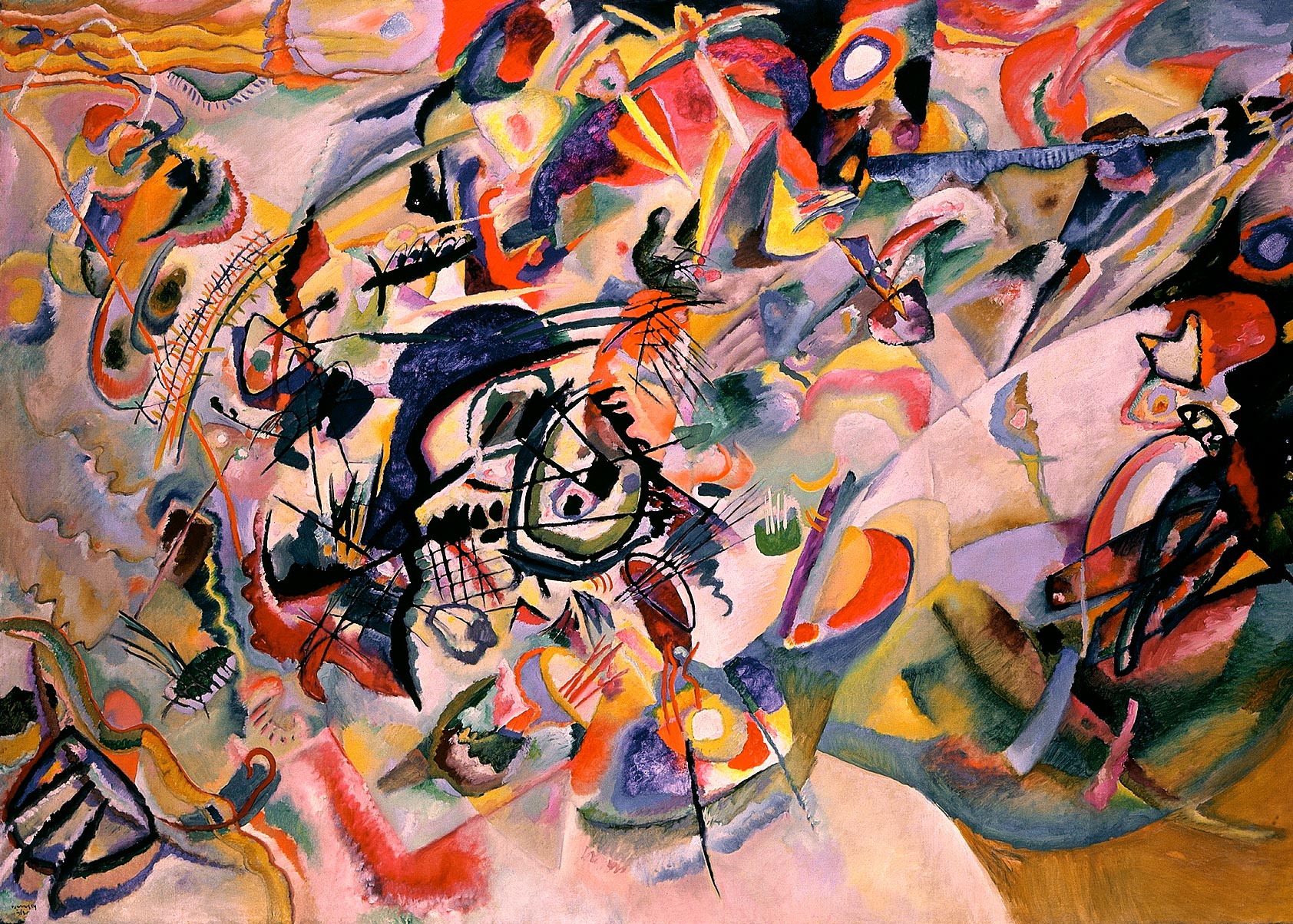Wassily Kandinsky


Squares with Concentric Circles

Several Circles
Wassily Kandinsky
Wassily Kandinsky was born on December 16, 1866. He was born in Moscow, Russia.
He was a painter, printmaker, and art theorist. He was one of the most important 20th-century artists. He was a major figure in modern art and painted some of the first modern abstract works.
Kandinsky went to college and then became a law teacher.
When he was thirty, he decided to change careers and become an artist. His early paintings were landscapes.
In 1909, Kandinsky began to think that painting didn’t need a particular subject, but that shapes and colours alone could be art.
Over the next several years he would start to paint what would become known as Abstract Art.
He is known as one of the founding fathers of Abstract Art. Some of his most famous works include Squares with Concentric Circles, Black Lines, Several Circles, and Composition VII.

Black Lines

Composition VII
Suggested Activities:
Primary-Secondary-Shapes!
Materials:
- Pencil and eraser
- White paper (any size)
- Various art tools available – pencil crayons, crayons, markers, paint (any)
Instructions:
Using Kandinsky’s Yellow-Red-Blue as inspiration, create your own abstract piece. Begin by sketching out your work on white paper with a pencil. Use your own preferred medium to add colour (e.g., crayons, markers, paint).
- Use only primary colours in the centre and secondary colours throughout the perimeter
- Use familiar 2D shapes on one side and abstract shapes on the other
- Make your colours light on one side and dark on the other
Prior Knowledge:
Familiarity with primary and secondary colours. Familiarity with 2D shapes. Understanding of abstract. Understanding of how to create light and dark (pressure/amount applied/addition of white and black).
Extension:
Try to tell a story within your piece (discussion/presentation and/or written accompaniment).

Yellow-Red-Blue, 1925
Yellow-Red-Blue, can be divided into two parts with geometric shapes and bright colors on the left and abstract shapes and dark colors on the right.
Christmas with Kandinsky
Example Work:


Materials:
- Heavy paper for background (tree – green paper if possible, paint/colour in green as an alternative)
- Construction paper (variety of colours)
- Glue sticks
- Scissors
- Glitter (optional)
- String if creating an ornament
Instructions:
Using Kandinsky’s Squares with Concentric Circles as inspiration, create your own abstract Christmas tree.

- Cut out various circles from construction paper (different colours and different sizes)
- Cut out a large triangle from green heavy paper (e.g., cardstock) - paint or colour in green if necessary
- Place and glue circles onto tree (see examples) and include a circle for top of tree
- Add glitter if wanted
- If making an ornament, attach string, if creating a picture, add black frame with construction paper
*Note that size may vary depending on what you are creating. An ornament will be significantly smaller than a framed piece.
Extension:
create a Christmas bulb following same instructions or a landscape (Christmas forest with various trees on the horizon).



Kandinsky Squares With all the Shapes!
Materials:
- Construction paper (various colours)
- Scissors
- Pencil
- Glue
- Hard, large paper for base
Instructions:
Recreate Kandinsky’s Squares with Concentric Circles, using all the different 2D shapes inside rather than just circles (e.g., triangle, rectangle, diamond, hexagon, etc.). Use construction paper to cut out shapes and glue to hard paper (e.g., cardstock).
Prior Knowledge:
Familiarity with 2D shapes.
Extension:
Assign each child 1 square with a different shape inside (paint or construction paper). Put together as a classroom project when done (bulleting board).

Squares with Concentric Circles, 1913
Abstract Kandinsky

Composition VIII, 1923
Instructions:
Using Kandinsky’s Composition VIII as inspiration, follow the video as a guided drawing lesson. Colour/paint in using vibrant colours.
Wassily Kandinsky Composition VIII
Wassily Kandinsky Pages
Look at ten of Kandinsky’s most famous paintings:
https://learnodo-newtonic.com/wassily-kandinsky-famous-paintings
